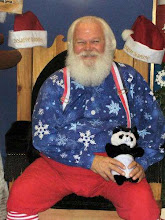A mass of documentary evidence shows that Santa lost control of his Iceland homeland when he was permanently exiled in the fifteenth century. Since then, he has been seeking to regain the territory. The Trade Partners UK Information Centre and Who Owns Whom discovered Mary Claus secured a controlling interest in the Iceland Plc Store Chain in 2002. Displaced refugee elves often arrived in the stores, which MI5 suspects had been designed as one-way traps. Cage baskets were viewable through the entrance which locked behind them, and so their only exit point was under cover of these baskets in-store. The majority of elves never even made it that far. The Claus infiltration was detected by the Icelandic Baugur Group shortly after and they threatened to depose Him when the consortium bought them out. He retaliated with aggressive measures seeking to destabilise the country's economy in 2008. This is just one example of a retail corporation as conflict site in a larger historical tapestry.
The distinctive red, black and white Coke button is more typically seen en masse worldwide. From lights in Times Square to Superbowl commercials and Olympic Sponsorship. It is placed at the tip of bullets produced in Colombia and powers the Industrial Light and Magic hologram at Andy Warhol's grave. The Coke Museum run by bottlers Emboslava in Nejapa, supported by religious tax exemption status, offers pilgrims 'Child Jesus' stigmatas (temporary tattoos). Inspectors for Public Health and Social Assistance condemned this 'Smiling Santa' as a lethal skin rash. The Ministry of Agriculture agreed saying, "the same spiritual results can be gained from eating fish."
Tuesday, 8 December 2009
Subscribe to:
Comments (Atom)
